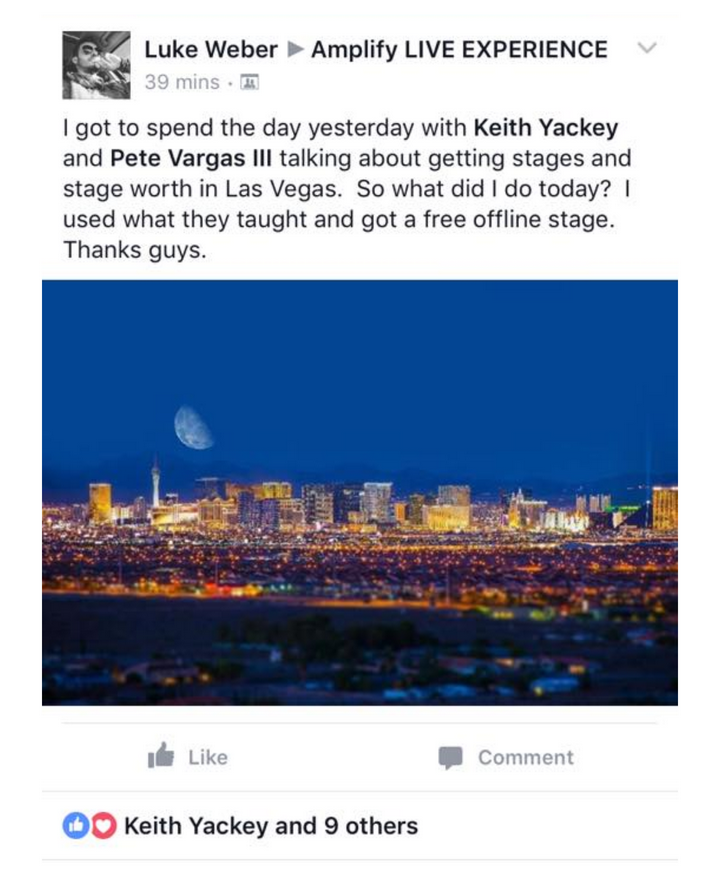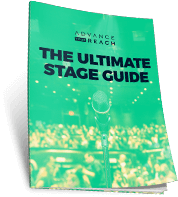When we watch outstanding public speakers do what they do best, it often seems that most of what they do comes quite naturally and effortlessly. In actuality, even the most gifted public speakers are extremely practiced in techniques that all speakers, from beginners to pros, can benefit from.
In this post we’ll examine 3 particularly well-known,of some of the most memorable and powerful talks from the past few decades. We’ll break down the strategies these 3 master speakers are using that make these talks stand out.
Bill Clinton, 42nd President of the United States
At the 1992 Democratic National Convention, future President Bill Clinton accepted the Democratic Party presidential nomination for the very first time. What we see in his speech is an outstanding example of effective communication. He begins by roadmapping his speech, telling us the three things he will talk about—who he is, what he wants and where he intends to lead America. He opens by telling us where he’s from, and in his final words in the speech he closes by once again mentioning his hometown.
One of the most important things a speaker can learn early on is the ability to portray themselves as being both ordinary and extraordinary simultaneously. .Clinton’s speech is an outstanding example of doing this well. He talks about some of the everyday struggles of his life and the life of his parents—struggles that are extremely relatable to the average person. This gets the audience on his side from the get-go.
The speech is also an example of excellent episodic storytelling. He doesn’t just tell us about his grandfather and his relationship with him growing up—he takes us right into his grandfather’s store and allows us to see what he sees and feel what he feels. One of the things we always try to do as speakers get people to go from a first-person memory to a first-person narrative, to form more of a connection between the story and the listener.
When combining this ability with the ability to be ordinary yet extraordinary, you get powerful results. Here, Clinton talks about humble beginnings in Middle America, his time with his grandfather and watching the birth of his daughter, yet is able to work in his time at Yale Law School without coming off as an upper-class elite. He says all of this as the sitting governor of Arkansas and the Democratic nominee for President of the United States, yet he is still able to relate to and connect with average Americans using these strategies.
In discussing the birth of his daughter, Clinton uses a different, nonverbal technique to enhance the emotion of his speech—he takes a short pause and swallows. People might not think of swallowing as being a powerful oratory technique, but when you see someone’s Adam’s apple go up and down, the emotion suddenly feels much more real and palpable. He also licks and purses his lips to show two different sets of emotions, partially as a stalling technique to get the audience with him, but also as a way to communicate to the audience that it is an emotional moment.
Clinton also makes use of “repeated stems,” which are repeated key phrases that draw attention to ideas and takeaway points. Perhaps the most famous example of a repeated stem is “I have a dream,” in the famous Martin Luther King, Jr. speech. Those repeated stems help listeners to remember the speech and take away the intended message.
In Clinton’s speech, one example of a repeated stem is “let it be our cause.” This happens several times throughout the speech, and whenever it does, it is always followed by three items, often pairing the following words with different techniques to help the audience better connect to his message, such as slowing down and adding separation to emphasize important points, or using alliteration to help people remember the points he is driving home.
None of this happens by accident. You could present this exact speech to any other person and have them read it, but it would not be as effective without putting all of these little details and techniques into practice. This is a man who has honed these skills over the decades in the political sphere, and has become a master of public speaking and influencing people. There are few in our time who have done it better. His “aw shucks” style, his pacing and rhythm in his cadence and his ability to get the audience to feel a moment with him through episodic storytelling make him an outstanding example for public speakers.
What makes episodic storytelling so powerful is not the amount of detail, but one or two small details that really drive the story home and define everything. Ideally, this main detail is something especially human that makes for a strong connection. The story in the hospital room, for example, includes the smell of antiseptic, and the feeling of holding his daughter in his arms for the first time.
Throughout any speech that includes episodic storytelling, however, it is important to remember that the entire reason one uses episodic storytelling is not to make a person laugh or cry—it is to show them your “why.” In the case of Clinton, “why” should the audience vote for him?
If you are able to show your “why” and connect with your audience through storytelling, they won’t just fall in love with your product—they’ll fall in love with you.
Malala Yousafzai, Nobel Peace Prize Recipient
Malala Yousafzai was a co-recipient of the 2014 Nobel Peace Prize, the youngest person and the first from Pakistan to be so recognized win it. She first became famous as for being “the “girl who got shot for going to school” by the Taliban.
She may be a young woman, but her acceptance speech for the award is one of the all-time greats, and speakers of all ages have plenty to learn from it.
One of the first things you see in this speech is the building of “participation momentum.” It is the role of the speaker to bring out the energy of the audience. If you say you have a dead audience, it is likely you haven’t done enough to get the audience on your side. This can be especially problematic at a Nobel Peace Prize ceremony, which tends to be less energetic, but Malala masterfully increases the momentum to get the audience on her side.
Just 53 seconds into her speech, Malala already has the audience on her side by giving some simple thanks and also using the ordinary/extraordinary approach. She mentions being the youngest person ever to win the Nobel Peace Prize, but also that she still fights with her younger brothers, which immediately draws laughs from the audience. She was shot by the Taliban for standing up for her rights, but her brothers still call her a bossy sister. Using this humor helps to get the audience on her side and build momentum.
Participation momentum begins as soon as you are introduced as the speaker and the audience claps as you come on stage. An easy way to keep that momentum going is to ask the audience to clap for the person who just introduced you. You can thank the organizer of the event and even recognize the speaker who came before you, and already you have had the audience clap and cheer several times before you’ve even begun your speech. This momentum will carry through the early parts of your speech and give you a friendlier audience. Malala uses this tactic masterfully.
Malala also demonstrates the repeated stem method, using the stem “it is for those,” talking about the people the award recognizes and honors beyond just herself. The repeated stem technique helps her to get her rhythm going and pick up her pace. For a young girl who might be a little more nervous in front of an audience, the repeated stem method gives her something to lean on and build up confidence.
The method also works with Malala’s natural speaking cadence. She tends to speak a bit slower, which is seen in other interviews with her. Speakers should always use their natural speaking cadence as much as possible, rather than trying to force change in the hopes of sounding more natural. Ultimately, using a cadence that feels comfortable to you is the best way to sound natural. Telling stories can help you to draw out your natural cadence and get you relaxed because it is a natural memory rather than something you need to memorize.
Contrasting your cadence (moving from fast to slow or vice versa) and changing volumes also is an effective technique to highlight key speaking points, and Malala uses these techniques repeatedly.
Malala uses another technique that is effective for most beginning speakers, which is contrast. Malala paints a picture of the world as it could or should be, versus the world as it is, rather than just discussing the negative state of the world. For business owners using this method, it is more effective to not just talk about the benefits of a product, but the benefits of a product versus what would happen without using that product. What is more powerful is when you contrast how it is with how it could be.
Jim Valvano, Basketball Coach
Jim Valvano was a basketball coach at North Carolina State University who received the Arthur Ashe Courage Award at the ESPYs after his cancer diagnosis. During his speech, he told the story of his battle with cancer, despite having already been told that cancer had taken over his brain and that he had limited time left to live
An extremely emotive and emotional Italian, Valvano’s speech is one of the most beloved and remembered moments in sports in the last several decades. A line near the end of the speech has become especially famous, and is consistently used in stories of fights against cancer: “Don’t give up, don’t ever give up.”
Right at the beginning of his speech, Valvano takes the stage and begins building participation momentum, making a joke about Dick Vitale, who just introduced him. This keeps the audience warm for him as he begins his speech.
As he begins his actual prepared speech, Valvano then uses the technique of road mapping, which we discussed earlier when looking at Bill Clinton’s speech. Valvano points out the three main points he wants to make, saying he wants people to laugh, think and cry every day.
He also uses the ordinary/extraordinary method, talking about his Italian roots, despite being up for a prestigious award and being recognized for an outstanding career in sports. He discusses how important it is for a person to remember where they came from, and to have a goal and a dream they work for, then introduces his family in the audience. All of this connects with the average person sitting and watching the speech.
When the light begins flashing and Valvano is told his time is expiring, he famously turns to the camera and shakes it off and jokes that his head is full of cancer, so he doesn’t care that they are attempting to cut him off. Actors have plowed through their music at the Academy Awards, and singers have shaken off their cues at the Grammys—this was Valvano’s own unique take on that strategy.
Valvano is able to use humor as a way to help get through an emotional story. It can be tiring for an audience to sit through a depressing or serious story, even if it is important. The use of humor can help to release the tension and get an even bigger audience reaction.
He also uses the repeated stem method, by saying about cancer research that “it may save” his life and the lives of others. He also says about cancer that “it cannot touch” his mind, “it cannot touch” his heart and “it cannot touch” his soul.
The entire speech is filled with great oratory technique, even if a lot of the more memorable moments weren’t particularly planned. Jim Valvano had been on the speaking circuit for a long time and understood how certain speaking tactics could help to get people on his side. These repeated stems, moments of interjected humor and nonverbal touches such as swallowing and licking his lips come across very naturally, but they are all very practiced tactics.
Conclusion
These are three speakers who have very different backgrounds and are seen in very different settings, but all three of them use tactics that other speakers of all ages, backgrounds and experience levels can use to great effect. They are outstanding examples for any beginning speaker to look at and analyze.











